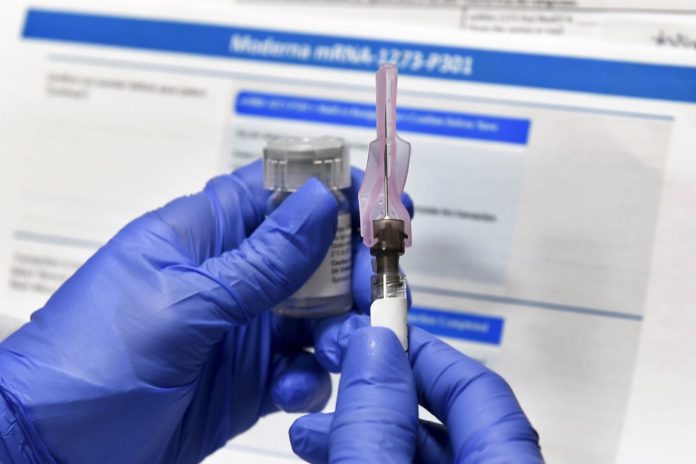
Arizona will receive 28,000 fewer doses of the coronavirus vaccine than expected next week, joining a chorus of states that say the federal government cut back on their allocation.
Arizona still expects to receive just under 42,000 doses of the vaccine made by Pfizer and BioNTech, along with nearly 120,000 doses of a vaccine from Moderna, said Dr. Cara Christ, director of the Arizona Department of Health Services. The Moderna vaccine received emergency authorization from the federal government Friday night.
The federal government has not explained why Arizona and other states are seeing their allocation of Pfizer doses cut, Christ said. It’s also not clear if the missing doses will be made up with larger allocations than expected later in the month, she said.
Arizona began vaccinating health care workers in Maricopa and Pima counties this week, the first stage of the largest mass vaccination effort in history. Next week’s reduced vaccine doses won’t affect plans to begin vaccination in Arizona’s other 13 counties, Christ said.
The state received all 58,500 doses expected this week, Christ said, but she didn’t yet have a number for how many doses were administered. Pima County expected to vaccinate 1,850 people by the end of Friday, far ahead of the 1,000 medical workers that its vaccination plan called for, said Spencer Graves, logistics manager for the county’s public health department. But the shortfall in Pfizer vaccines next week may slow the pace, he said.
Arizona on Friday reported 142 additional known coronavirus deaths, the third straight day that the figure was in triple digits. There were 7,819 new confirmed cases, one of the largest daily increases in cases during the current surge.
Phoenix Police Chief Jeri Williams announced she has tested positive and is staying home with mild symptoms. With Executive Assistant Chief Michael Kurtenbach isolated with his own infection, Assistant Chief Patrick Connolly was designated acting police chief, police announced.
Virus-related hospitalizations in Arizona reached 3,931 on Thursday, the latest in a string of pandemic records started earlier this month. Before the current surge, the previous daily hospitalization record was 3,517 on July 13 during the state’s summer surge.
Arizona hospitals are nearly at capacity, with only 7% of beds available and not in use.
Arizona’s COVID-19 outbreak was already growing before the Thanksgiving holiday weekend but has accelerated since. A senior official of a Phoenix-based hospital chain urged people to avoid gatherings and take further precautions during the upcoming holidays.
“We’re all feeling fatigued and ready for life to get back to normal, but if we follow safety guidelines we’ll get there sooner rather than later,” Dr. Marjorie Bessel, Banner Health’s chief clinical officer, said Thursday night in an email.
Christ, the state’s top public health official, said many people infected with COVID-19 have apparently dropped their guard in private dinners and similar settings.
“Our 600 contact tracers point again and again to situations where people socialize without taking the precautions that are required in most public places,” Christ said, referring to social distancing and masking.
Seven-day rolling averages for three key COVID-19 metrics continued to rise over the past two weeks, according to data from Johns Hopkins University and The COVID Tracking Project.
The rolling average of daily new cases rose from 4,585 on Dec. 3 to 6,786 on Thursday as the rolling average of daily deaths rose from 36.1 to 74.7 and the rolling average of daily COVID-19 testing positivity increased from 13% to 14.5%.
The number of infections is thought to be far higher than reported because many people have not been tested, and studies suggest people can be infected with the virus without feeling sick.
Republished with the permission of the Associated Press.














